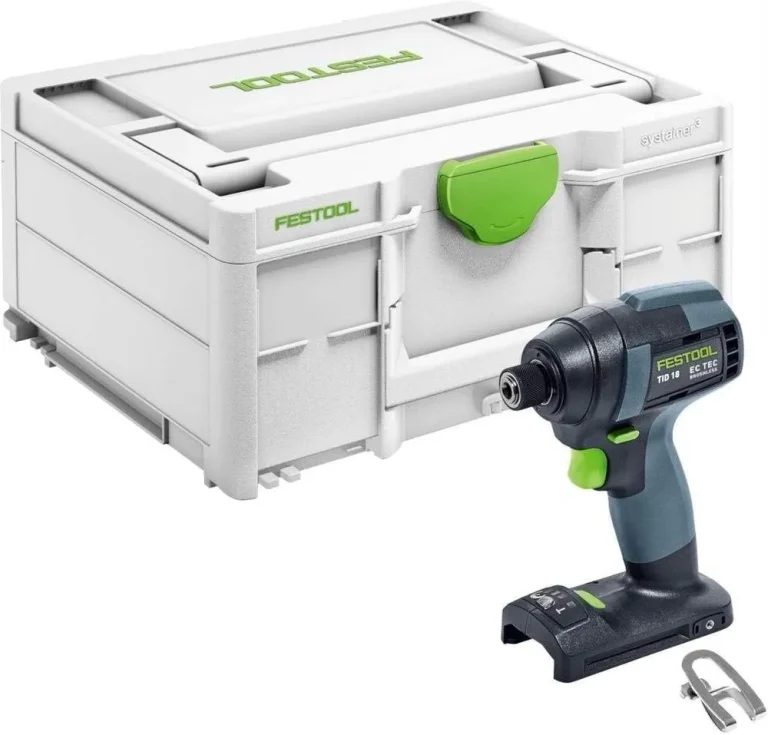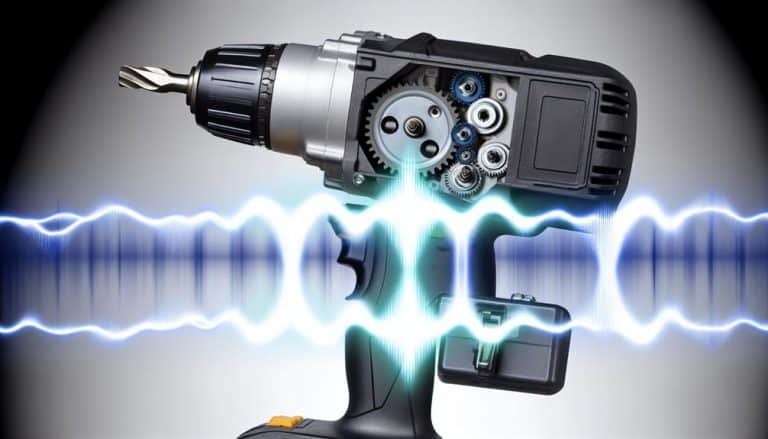Hammer Drill vs Impact Driver – The Ultimate DIY Showdown
Welcome to this informative article about the difference between hammer drills and impact drivers! If you’re someone who enjoys DIY projects or is a professional in the construction industry, you’ve probably heard of these two tools. However, despite their popularity, many people still confuse the two, which can lead to less efficient and less effective work.
In this article, we’re going to break down the differences between hammer drills and impact drivers, so you can better understand which tool to use for your next project. We’ll explain the purpose of each tool, how they work, and provide examples of when to use each. Additionally, we’ll provide a handy comparison chart and some tips on how to choose the right tool for the job.
So, if you’re ready to learn more about these powerful tools, let’s dive in!

What is a Hammer Drill?
Let’s start by discussing what a hammer drill is. A hammer drill is a power tool that’s designed for drilling holes into hard materials like concrete, masonry, and stone. It works by combining a forward and backward rotational drilling motion with a hammering action that helps to break up the material as it drills.
When to Use a Hammer Drill
When it comes to using a hammer drill, it’s best suited for heavy-duty construction and renovation projects. Some common examples of when you might want to use a hammer drill include drilling holes for anchor bolts in brick or block walls, attaching fasteners to concrete or masonry surfaces, and demolishing concrete or masonry walls.
Benefits of a Hammer Drill
One of the main benefits of using a hammer drill is that it’s designed to handle tough materials with ease. Its hammering action helps to break up and pulverize the material as you drill, making it easier to create clean and precise holes. Additionally, some hammer drills feature a chiseling function, which allows you to chip away at hard materials for more intricate demolition work.
Overall, if you’re working with tough materials that require a lot of power to drill through, a hammer drill is definitely the way to go. Its ability to handle heavy-duty work makes it an essential tool for anyone working in the construction industry or taking on a large renovation project.
Types of Hammer Drills
There are two main types of hammer drills: corded and cordless. Corded hammer drills are powered by electricity and offer consistent power and performance, making them a popular choice for heavy-duty drilling tasks. Cordless hammer drills, on the other hand, are powered by rechargeable batteries and offer the convenience of being able to work without being tethered to an electrical outlet.
There are also SDS (Slotted Drive System) hammer drills, which are designed for drilling into hard materials like concrete and masonry. These drills have a specialized chuck that allows for the use of SDS drill bits, which are specifically designed for drilling into these materials. Corded and cordless SDS hammer drills are available
Additionally, there are rotary hammers, which are similar to SDS hammer drills but are designed for even more heavy-duty applications. These drills use a piston mechanism to deliver even more power and force, making them a popular choice for professional contractors and construction workers.
Ultimately, the type of hammer drill you choose will depend on your specific needs and the projects you’ll be working on. Be sure to consider factors like power, performance, and portability when making your decision.

What is an Impact Driver?
Now that we’ve covered hammer drills, let’s talk about impact drivers. An impact driver is a power tool that’s designed for driving screws and other fasteners. It works by using rotational force with a rapid tapping action to generate high torque, making it easier to drive screws and other fasteners into tough materials like wood, metal, and plastic.
When to Use an Impact Driver
When it comes to using an impact driver, it’s best suited for assembly, fastening, and automotive work. Some common examples of when you might want to use an impact driver include building a deck or fence with lag bolts, assembling furniture or cabinetry, and working on your car or truck.
Benefits of an Impact Driver
One of the main benefits of using an impact driver is that it provides high torque in a compact and lightweight package. Its rapid tapping action generates high levels of torque, making it much easier to drive screws and other fasteners into tough materials. Additionally, because of its compact size, an impact driver is much easier to maneuver in tight spaces than a traditional cordless drill.
Overall, if you’re working with screws or other fasteners, an impact driver is definitely the way to go. Its compact size and high torque make it an essential tool for anyone working on an assembly project or in the automotive industry.
💡Is an impact wrench the same as an impact driver?
No, an impact wrench is not the same as an impact driver, although they are both impact tools.
An impact wrench, also known as an air wrench or pneumatic wrench, is a powerful tool that is typically used in automotive and industrial applications. It is used to remove or tighten bolts and nuts, and it delivers high torque output with minimal effort from the user. Impact wrenches come in a variety of sizes and can be powered by compressed air, electricity, or batteries.
An impact driver, on the other hand, is a versatile tool that is primarily used for driving screws and other fasteners. It is smaller and lighter than an impact wrench, and is ideal for tasks like assembling furniture or installing cabinets. Impact drivers typically have less torque output than impact wrenches, but they are designed to deliver more rotational force, which makes them well-suited for driving screws into tough materials like wood and metal.
So while both tools use impact technology to deliver fast, efficient results, they are designed for different purposes and applications. It’s important to choose the right tool for the job to ensure that you get the best results possible.

Impact Driver vs Hammer Drill
Now that we’ve covered what a hammer drill and an impact driver are and their respective benefits, let’s discuss the main differences between the two tools.
The key difference between a hammer drill and an impact driver lies in their function. While both tools use a rotational motion to drive fasteners or drill holes, they do so in very different ways.
Hammer drills are designed for drilling into hard materials like concrete, masonry, and stone. They use a combination of a forward and backward drilling motion with a hammering action to break up the material as it drills. This makes them well-suited for heavy-duty construction and renovation projects.
On the other hand, impact drivers are designed for driving screws and other fasteners into wood, metal, and plastic. They use rotational force with a rapid tapping action to generate high torque, making it easier to drive screws and other fasteners into tough materials. This makes them well-suited for assembly, fastening, and automotive work.
The tools are also used differently in various applications. Many hammer drills can be used to drill pilot holes for screws and other fasteners, but it’s not the most efficient tool for driving them. An impact driver, on the other hand, is not designed for drilling into hard materials like concrete or masonry.
To help you easily compare the two tools, we’ve provided a handy comparison chart. This chart outlines the main differences between hammer drills and impact drivers, including speed, torque, and use cases.
| Hammer Drill | Impact Driver | |
| Purpose | Drilling into hard materials (concrete, masonry, stone) | Driving screws and other fasteners |
| Action | Forward and backward drilling motion combined with hammering action | Rotational force with rapid tapping action |
| Torque | Moderate torque | High torque |
| Speed | Low to moderate speed | High speed |
| Chuck | Keyed or keyless chuck, accommodates larger drill bits | Quick-release hex chuck, accommodates hex-shanked bits |
| Applications | Construction, home renovation, DIY projects | Assembly, fastening, automotive work |
| Power Source | Corded or cordless | Cordless (usually) |
| Noise | Loud | Moderately Loud |
| Price | More expensive than impact drivers | Less expensive than hammer drills |
At the end of the day, choosing the right tool for the job comes down to understanding the differences between hammer drills and impact drivers, and knowing which tool will be most effective for the task at hand.

How to Choose the Right Tool for the Job
When it comes to choosing the right tool for the job, there are a few key factors to consider.
Size and Scope
First and foremost, you’ll need to think about the size and scope of your project. For larger construction or renovation projects that involve drilling into concrete or masonry, a hammer drill is likely the best choice. For smaller projects, or those that involve driving screws and other fasteners into wood or metal, an impact driver is likely the better choice.
Materials
Another important factor to consider is the materials being worked with. As we’ve discussed, hammer drills are designed for drilling into hard materials like concrete, masonry, and stone. If you’re working with these materials, a hammer drill is the way to go. If you’re working with wood, metal, or plastic, an impact driver is the better choice.
Level of Precision
Finally, you’ll need to consider the level of precision required for your project. If you’re drilling holes that need to be a specific size or shape, a hammer drill is the better choice. If you’re driving screws or other fasteners into wood or metal, an impact driver is typically the more precise option.
Ultimately, choosing the right tool for the job requires a bit of forethought and planning. By considering the needs of your project, the materials you’ll be working with, and the level of precision required, you’ll be able to select the tool that’s best suited for the task at hand.
Time to Get Drilling…Or Driving
In summary, hammer drills and impact drivers are both valuable tools, but they serve different purposes. Hammer drills are designed for drilling into hard materials like concrete and masonry, while impact drivers are ideal for driving screws and other fasteners into wood and metal. When choosing the right tool for the job, it’s important to consider the project’s needs, the materials being worked with, and the level of precision required.
Using the right tool for the job is essential for achieving a high-quality result and avoiding frustration or damage to your tools. By understanding the differences between hammer drills and impact drivers, you’ll be better equipped to select the appropriate tool for each task.
If you’ve had experience with either tool, we encourage you to share your thoughts and experiences in the comments below. Have you found one tool to be more useful than the other? Do you have any tips or tricks for using these tools effectively? We’d love to hear from you!







